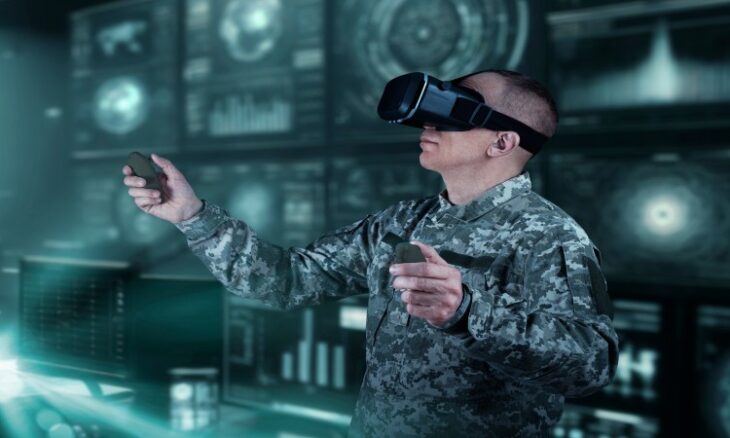Apple Vision Pro Drives New Era in Military Simulation
When Apple Vision Pro debuted, most observers expected a surge in entertainment and productivity apps. Few anticipated its swift entry into high-stakes defence training. That shift has begun with Rogue Labs’ new helicopter simulation, Flight Sight, and parallel military trials of augmented and virtual reality systems. Together, these innovations are transforming how complex missions and maintenance routines are taught, executed, and refined.
Rogue Labs’ Flight Sight represents a marked leap forward in helicopter instruction. Designed for Apple’s spatial computing platform, it merges cinematic visuals with interactive 3D models to create a training experience far beyond conventional simulators. The software integrates 180-degree immersive video captured on high-end cine cameras, bringing cockpit perspectives to life with remarkable depth and realism.
The platform allows users to manipulate helicopter models, scaling them to inspect interior and exterior parts closely before stepping back to review full operational procedures. Detailed airport maps and spatial flight-path visualisations enable users to study take-off, landing, and navigation in context. The ability to transition smoothly from micro-level inspection to complete situational awareness offers a level of adaptability that static classroom materials cannot match.
Priced at around ten dollars, Flight Sight provides a striking contrast to traditional flight sessions that can cost more than a thousand dollars per hour. Its creators see it not as a single application but as the foundation for an evolving ecosystem, with regular content updates set to expand its training repertoire.
While such consumer-grade apps make headlines, the military’s application of immersive technology underscores its growing operational value. During a recent deployment from San Diego, the USS Nimitz Strike Group tested the Augmented Reality Maintenance System, known as ARMS. The technology enables sailors to conduct repairs guided by shore-based specialists through simplified AR headsets. Deployed across four vessels, the project marked a decisive step towards embedding augmented tools directly into naval operations.
ARMS is not merely a hands-free video link. It allows access to maintenance cards, schematics, and 3D imagery while experts supervise procedures in real time. The Navy accelerated its testing timeline from seven months to just one, reflecting strong confidence in the system’s readiness and potential. This transition from experimental to operational use illustrates how immersive technologies are beginning to influence front-line readiness.
Elsewhere, the U.S. Air Force continues to refine virtual environments through its Joint Simulation Environment (JSE). Originally developed in 2016 for F-35 pilots, the JSE offers a hyper-realistic training range equipped with functioning cockpit replicas and expansive projection domes. Each cockpit runs the same software used in live aircraft, and the simulation can replicate thousands of threat profiles derived from intelligence data.
By early 2022, Air Force pilots had completed dozens of defensive air missions inside the JSE’s digital arena, gaining practical experience without risking hardware or lives. Over a thousand F-35 pilots have since trained in this environment, demonstrating how virtual sessions can deliver measurable preparedness.
Civil aviation has also begun to adopt Apple Vision Pro technology for commercial training. Flight simulation leader CAE recently unveiled an immersive application for the headset, showcasing detailed cockpit renderings of aircraft such as the Bombardier Global 7500. Its training suite features three progressive modes, Exploration, Guided, and Flight Deck Interaction, helping pilots move from familiarisation to complex procedural practice. CAE’s strategic focus remains on fine-tuning the current version for professional release in 2025, rather than chasing rapid expansion.
This convergence of consumer hardware and defence-grade realism is redefining what “training” means. The falling barrier to entry, from the Vision Pro’s £2,700 price tag to low-cost, high-fidelity simulations, signals a democratisation of tools once reserved for elite institutions. Where past systems required vast facilities and specialist teams, today’s users can explore intricate scenarios almost anywhere.
The implications are broad. Defence and commercial sectors are beginning to share insights and design feedback, accelerating software evolution across industries. Field-tested systems like ARMS and high-end simulations such as the JSE provide templates that consumer developers can adapt for enterprise or academic use.
As hardware matures and immersive content expands, the boundary between virtual and operational training continues to fade. From naval engineers troubleshooting at sea to pilots practising complex manoeuvres in their living rooms, the next generation of learning is no longer confined to the classroom or cockpit. With Apple Vision Pro at its core, the era of accessible, high-fidelity simulation has taken flight.










